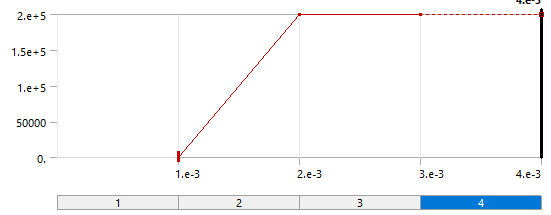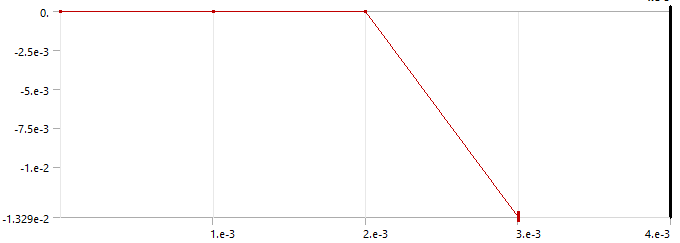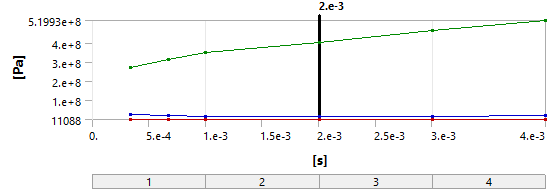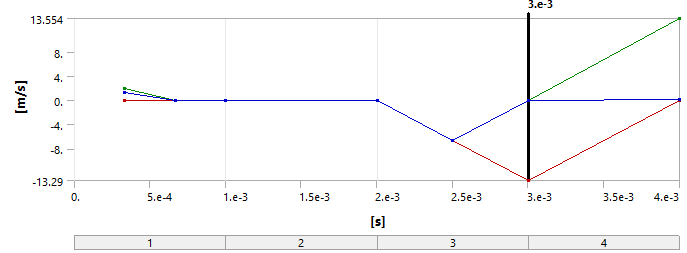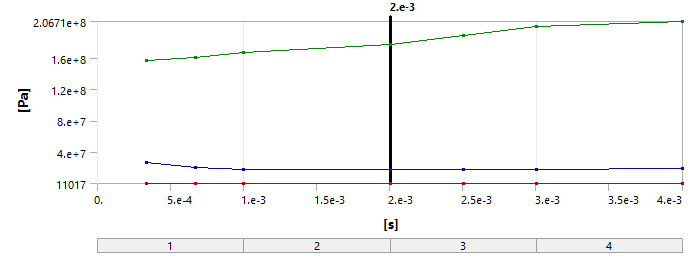-
-
December 19, 2023 at 5:30 pm
a.cindrak
SubscriberHello,
I want to perform a transient analysis in which I want my assembly (which is similar to a containment vessel) to be loaded in 4 steps as described hereunder:
- The first step is the step where the bolts in the assembly are preloaded using the "Load" definition of the pretension function . Time integration is set to OFF during this step. Except the fixed displacements applied isostatically to prevent any rigid body motion, no other boundary conditions are applied to the model. For all the other steps, the definition "Lock" is applied (see picture hereunder).
- The second step is the step where the other load is applied. Time integration is set to OFF during this step. The other load is a pressure applied to simulate the internal pressure of a containment vessel as shown in picture hereunder. The pressure load was deactivated in step 1.
- The third step is the one problematic. In this step, the nodes that were fixed during the two first steps are now given a certain displacement (picture hereunder)so that at end of step 3 the global assembly reaches a velocity which will be then used as initial assembly velocity for the step 4 (where time integration is set to ON). Time integration is set to OFF in step 3 and no supplementary load to the ones already applied are added so that the global assembly only has a rigid body motion.
- However, the results show that the stress state between end of step 2 and end of step 3 is not the same. I cannot explain that. The pictures hereunder show that the stress is indeed varying as the maximum value is changing during third step and the variation is not negligeible (approx 20%).
Here is my question :
- Why is there a stress variation between the beggining and the end of step 3 which is a rigid body motion step ?
- It seems the stress variation is located around the bolts where pretension has been applied. When suppressing pretension, the variation of stress during step 3 gets negligeible (approx 1%). So the problem seems to be located in the pretension load and how it is applied.
- Shouldn't the lock option of the pretension load keep the stress state at bolts as it is on end of step 1 ?
- I tried applying the adjustment option instead of lock but the model doesn't converge anymore until the end of step 4 since it detects an abrupt variation in displacement.
- Except this aspect, my model and simulation had good results. So, maybe the variation in stress is normal. If yes, why does the stress state change around bolts during a rigid body model ?
I hope I have well explained my problem.
Thanks in advance to you for your time and help !
Best,
Amar
-
December 21, 2023 at 3:57 pm
dlooman
Ansys EmployeeSometimes it is necessary to turn on large deflection when using bolt pretension to get correct nonlinear contact behavior in the vicinity of the bolts. Are you using multiple substeps in each of the first three steps? In 2023R2 there's a new capability to specify initial conditions at the load step level: ic,all,velx,1,,,,lsic
-
January 3, 2024 at 8:08 am
a.cindrak
SubscriberHello,
Thank you for your answer. Sorry for my late answer due to winter holidays.
The large deflections are turned on.
Except for the third step, I use mutiple substeps.
The reason why I use only one substep for the third step is that with multiple substeps on step 3, I don't get the correct directional velocity on my assembly at end of step 3. See the picture hereunder obtained with two substeps where the directional velocity is only variating "correctly" at substep 1 of step 3:
But anyway, the number of substeps doesn't seem to be the reason why stress is variating during the rigid body motion step (step 3), see picture hereunder obtained with two substeps on step 3:
As a reminder, my problem is that I have variating stress on step 3 which is a rigid body motion step.
Best Regards,
Amar
-
- The topic ‘Unwanted stress variation at rigid body motion step in transient analysis’ is closed to new replies.



-
4597
-
1495
-
1386
-
1209
-
1021

© 2025 Copyright ANSYS, Inc. All rights reserved.


